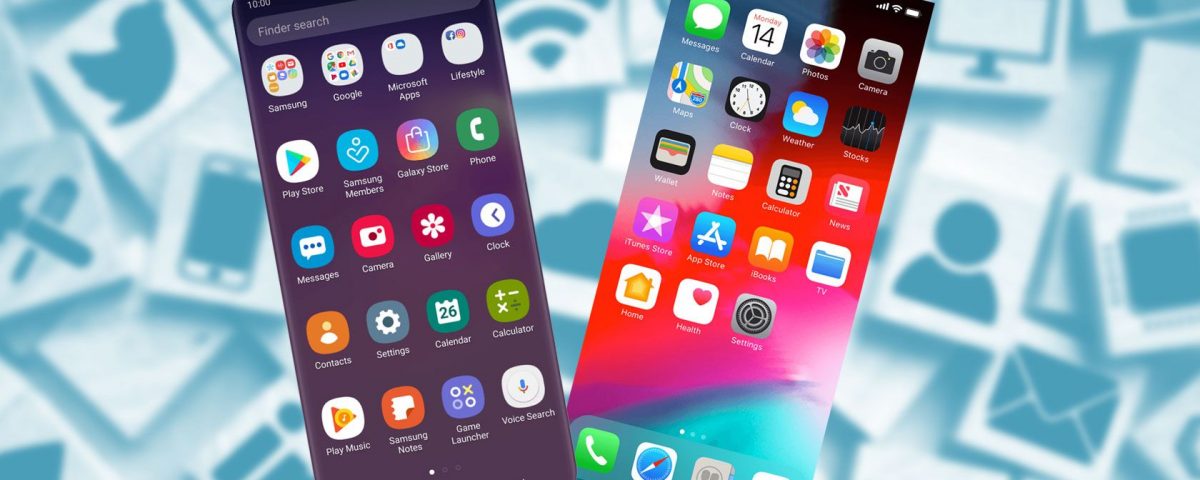Background app refresh is an important function on both iPhone and Android phones. If you’ve seen this term floating around and aren’t sure what it means, we’re here to explain.
Let’s look at what background app refresh means, what it does for you, and how to change its behavior.
What Is Background App Refresh?
Background app refresh is a feature of iOS and Android that allows apps to update their content from the internet, even while you’re not using them. In contrast, we say that apps use data in the foreground when you open and use them yourself.
Background app refresh is useful in that it makes using apps more seamless, but it has a few negative side effects too.
What Does Background App Refresh Do?
Background refresh enables apps to perform all sorts of functions in the background; you would otherwise have to keep an app open for it to access these. But what does background app refresh actually do? Here are some examples of the actions it handles without you having to manually check:
- News apps grab the latest headlines so they’re updated when you open them
- Apps that track your mobile data usage collect information in the background
- Cloud storage services sync your files automatically
- Grocery store apps detect that you’re at a store and ready the latest digital coupons
- Social media apps like Twitter preload the latest tweets so you don’t have to wait for them upon opening
Note that if you swipe apps closed from the app switcher, they may not update again until you open them. This is one of the many reasons that you shouldn’t constantly swipe to kill all your apps.
Also, it’s important to note that for most apps on iPhone, background app refresh does not affect notifications. This means that you can disable the feature for messengers like WhatsApp and you’ll still see notifications when you get a new message. However, this isn’t the case for Android, as we’ll see in a bit.
Should I Use Background App Refresh?
In most cases, background app refresh is convenient. However, there are two main reasons why you might want to turn it off.
First is that by default, background app refresh is active on both mobile data and Wi-Fi connections. Apps can use quite a bit of data in the background, so if you’re on a limited data plan, this can result in extra charges on your bill.
The other reason to disable background app refresh is to save battery life. Apps running in the background consume battery power just like when you run them in the foreground. If you’re looking to maximize how long your device lasts between charges, you probably don’t want to waste battery on background tasks.
As far as which apps need background app refresh, that’s up to your preferences. Generally, you should keep it enabled for any apps you use frequently and disable it for apps you rarely open.
Thankfully, both Android and iOS let you turn off and tweak background app refresh. Let’s see how to do this.
How to Turn Off Background App Refresh on iPhone
To change which apps run in the background on your iPhone, head to Settings > General > Background App Refresh. Here, you’ll see a list of apps on your iPhone that use background app refresh.
Simply disable the slider for an app, and it will no longer update in the background. You’ll need to open the app for it to go online and check for new information. Be careful about doing this for apps where you rely on up-to-date content.
Tap the Background App Refresh field at the top to change how the function works globally. If you have Wi-Fi & Cellular Data selected, apps will refresh on any kind of network. Choose Wi-Fi if you don’t want apps to check for new content when using mobile data, which is a good idea if you have a limited cellular plan.
You can also choose Off to never have apps refresh in the background on your iPhone. This will save battery, but it also makes apps significantly less useful, so use it with caution.
Low Power Mode and Cellular Access on iPhone
There are two other iPhone options you should know about that are related to background app refresh.
One is Low Power Mode, which restricts your iPhone’s processes to save battery. It’s located under Settings > Battery or using the Control Center shortcut.
When you enable Low Power Mode, your iPhone reduces its brightness, disables email pushing, and turns off background app refresh completely. It’s thus more convenient to turn on Low Power Mode than to disable background app refresh itself if you’re looking to save battery life for a short time. When you disable Low Power Mode, background refresh will turn back on.
Finally, in the Settings > Cellular menu, you can disable the slider for any app that you don’t want to use cellular data. This is a good way to prevent data-hungry apps from using too much data with background app refresh, while still allowing other apps to take advantage of the function even on mobile data.
How to Turn Off Background App Refresh on Android
Android doesn’t have a feature with the exact name «background app refresh;» this is an iPhone term. However, Android offers options that accomplish nearly the same functions. The option location and name will depend on your device; the below instructions are for stock Android 12 on a Pixel phone.
To prevent an app from using mobile data in the background, head to Settings > Apps (Apps & notifications on older versions) > See all X apps. Tap the app in the list that you want to disable background app refresh for.
From this menu, you have two different options for disabling background activity in Android. If you want to prevent the app from using your cellular data in the background, select Mobile data & Wi-Fi and disable the Background data slider.
This will prevent the app from using mobile data unless you’re using it in the foreground. Background usage when on Wi-Fi isn’t affected.
Your other option is to prevent the app from running in the background at all. To do this, tap Battery on the app’s settings page (it’s under the Advanced section in Android 11 and older).
On Android 11 and older, tap Background restriction, followed by Restrict, to prevent the app from consuming much power in the background. On Android 12, tap the Restricted option here.
Unlike the iPhone’s background app refresh feature, this does affect notifications. Thus, you should only restrict battery usage for apps that you don’t need real-time alerts from.
Account Sync, Battery Saver, and Individual App Options on Android
There are a few other options related to background app refresh you should be aware of on Android.
Android keeps all your synced internet accounts on a separate page in Settings. Head to Settings > Accounts (or Passwords & Accounts on Android 12) to see them. Tap an account and choose Account sync to review and tweak what it syncs. For instance, you might be able to stop the service from syncing your contacts, files, and other data all the time.
For a more drastic step, disable the Automatically sync app data slider at the bottom of the main screen. Then, accounts will only sync when you manually trigger a refresh.
Most Android phones have an option called Battery Saver or similar, located under Settings > Battery. Enabling Battery Saver is a lot like Low Power Mode on iPhone—it restricts apps from running in the background to conserve as much juice as possible. You may also have an Adaptive battery setting, which controls how much battery apps can use based on how frequently you use them.
Finally, if none of the above options restricted background app refresh in the way you want, it’s worth checking the individual settings in your apps. Many apps let you choose how often your feed syncs, new emails are fetched, and similar. You might be able to turn off the one behavior you don’t use inside an app.
Now You Understand Background App Refresh
While background app refresh works a bit differently on iPhone and Android, it’s a handy feature that lets apps stay up-to-date even when you’re not using them. And while this is convenient most of the time, you now also know how to prevent apps from using too much battery or mobile data in the background by disabling background refresh.
It’s a shame that smartphones have such short battery life compared to other devices, but at least you have ways to maximize it.
Read Next
About The Author





